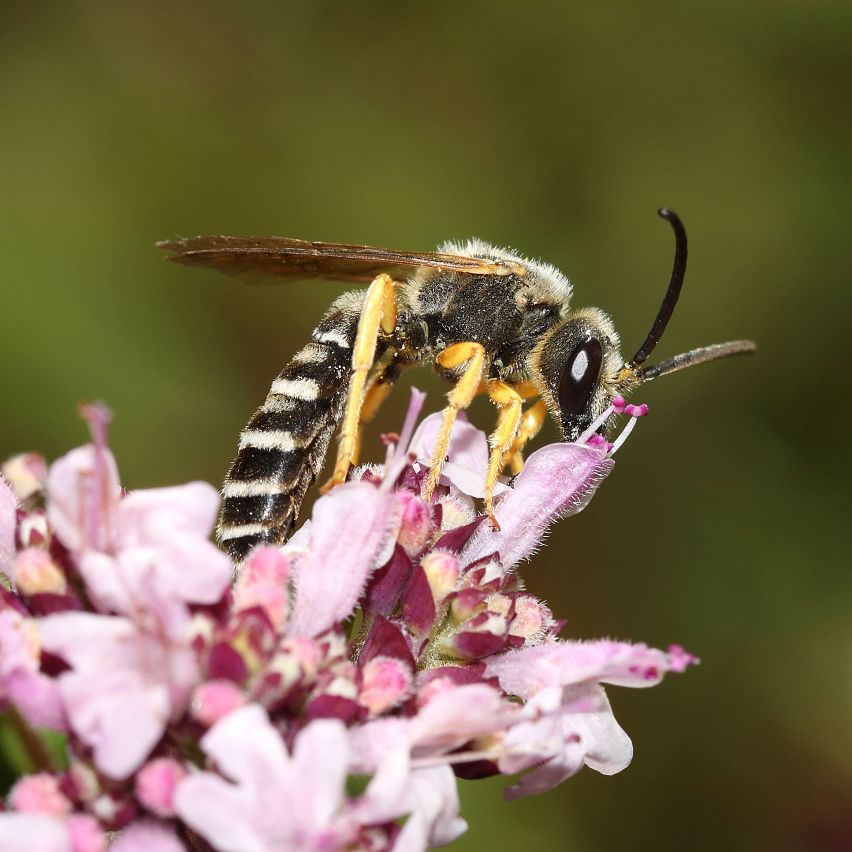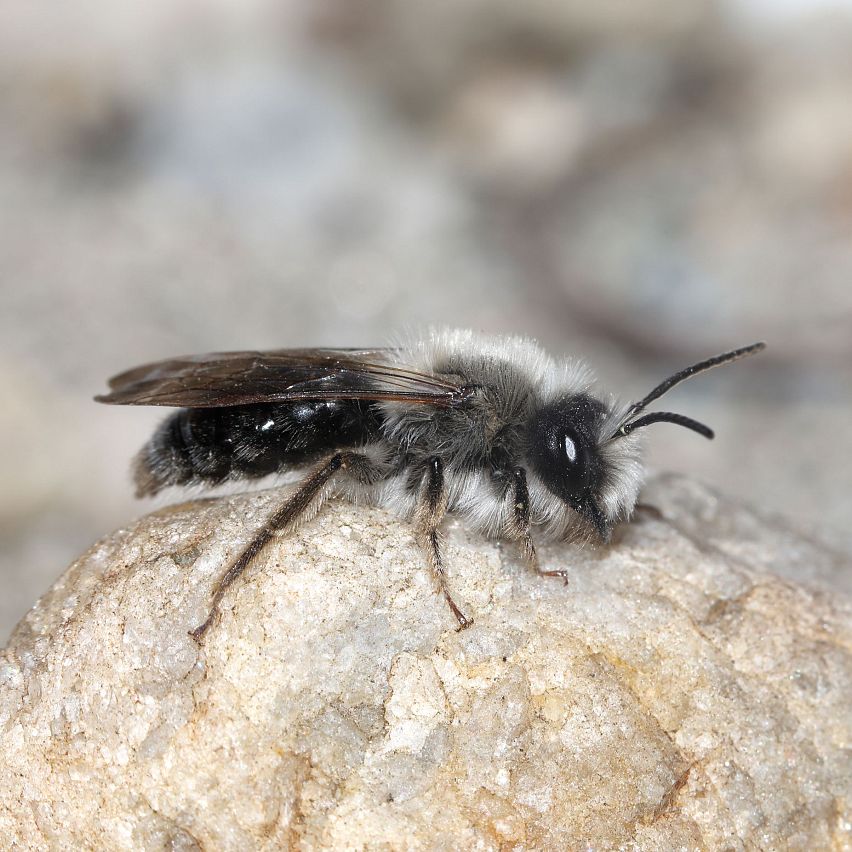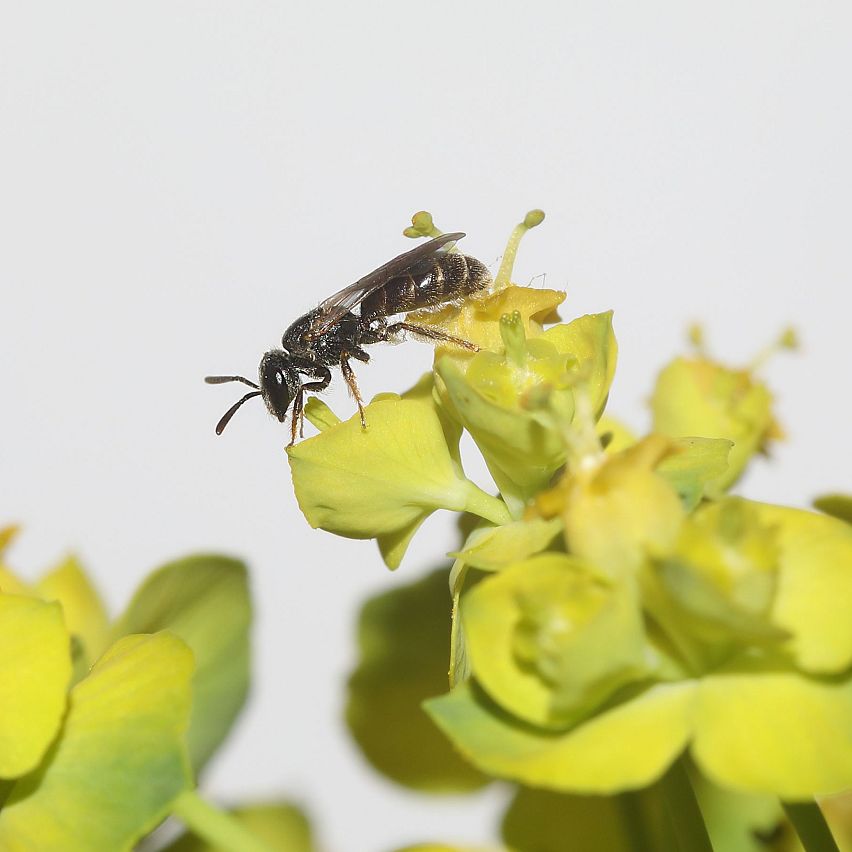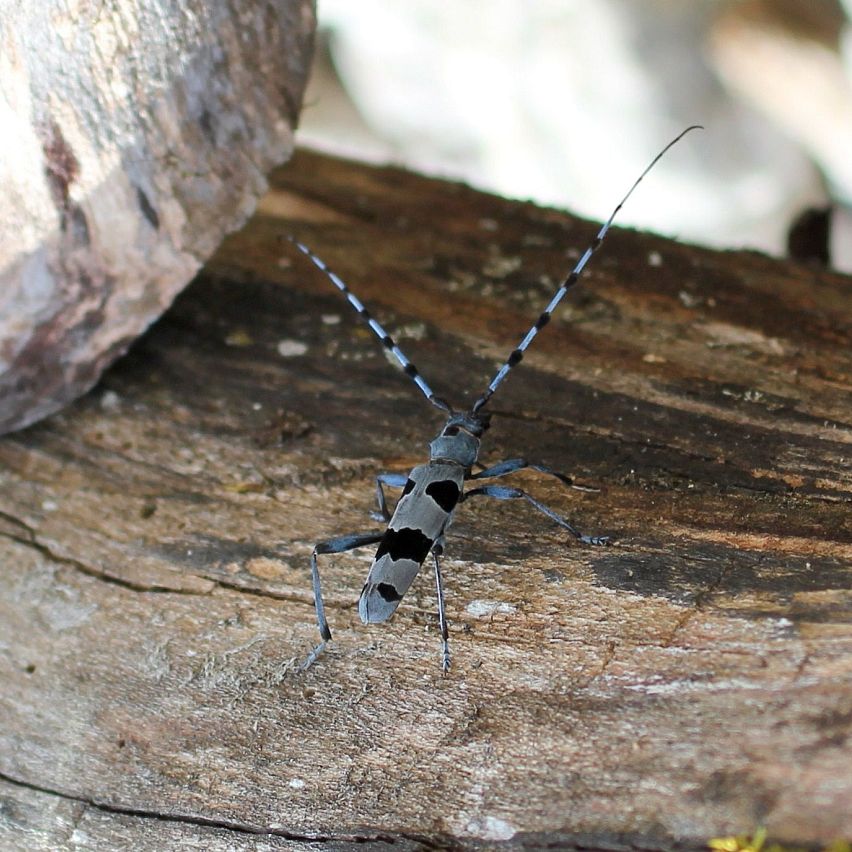Board 4 - In the deadwood
Only dead wood? Not at all! There's life everywhere: Lizards, beetles, wild bees, birds... The old wood provides a valuable habitat for countless species. The larvae of the Alpine longhorned beetle, for example, spend between 3 and 4 years in the dead wood of beech or sycamore trunks until they develop into adult beetles.
In subsequent years, these empty beetle burrows are reused by various wild bees and insects to create breeding chambers. Birds such as the black woodpecker love to peck the wood for energy-rich beetle larvae, and lizards lie in wait in the shade for coveted wild bees.
We have created a real open-air cinema for you here: A species-rich deadwood garden that is not as dead as it may look at first glance. So take your time and patiently observe the old wood, and you're sure to find a few little friends!
TOGETHER FOR DIVERSITY
Cross-border Species Protection
Probably the most beautiful and best-known beetle in the Alps is the rare Alpine ibex, which is protected throughout Europe and is one of the largest native beetles in the world. Its backward-curved antennae are somewhat reminiscent of the horns of an ibex—hence the name.
Together with the Research and Teaching Institute of the Innsbruck Alpine Zoo (FLI), the Tyrolean State Museums, the Austrian Federal Forests, Tratzberg Castle, and the state of Tyrol, a special species aid project was created with the Swedish Nordens Ark Zoo: in July 2019, a small group of Alpine ibex traveled from the Tyrolean Karwendel to Sweden. They are now being bred there as part of a research project and then released back into the nature park to support the local species population. It is essential to raise awareness of how important forests rich in deadwood are—not only for woodpeckers and the like but also as a habitat for insects!

THE OCHRE YELLOW
Yellow-Banded Furrow Bee
– Halictus scabiosae –
- Characteristics: Slender, up to 14 mm in size, striking ochre-colored stripes on the abdomen, abdominal forager.
- Habitat: Dry, warm areas such as sand and clay pits, open forest edges, also in residential areas, fallow land, and parks.
- Way of Life: Mated females overwinter together in the maternity nest. In spring, one female takes on the role of queen, lays eggs, and guards the nest entrance. The auxiliary females care for the brood but are driven away by the queen before the new bees hatch. They then found their own nests in self-dug tunnels up to 30 cm deep in sparsely vegetated soil (solitary/solitary lifestyle).
- Observation Tip: Especially on composite plants such as arnica, alpine goldenrod, daisies, and dandelions, also on bindweed and card plants such as the native thistle.
- Observation Period: April to October.

THE EARLY
Willow Sand Bee
– Andrena vaga –
- Characteristics: 15 mm large, black with conspicuous grey-white hairy thorax, leg collector.
- Habitat: Sand, gravel, and clay pits, embankments, and gardens.
- Lifestyle: They live individually (solitary) or in small to large communities, prefer to build ground nests in sandy soil, and exclusively collect willow pollen for their offspring—hence the name!
- Observation Tip: Specialized on willows.
- Observation Period: February to May.
Willows are one of the most important spring bloomers. Wild bees, honey bees, and butterflies such as the lemon butterfly depend on this first source of nectar.

THE SHIMMERING
Emerald Green Narrow Bee
– Lasioglossum morio –
- Characteristics: Males are 10 mm, females are 7 to 8 mm, with a narrow, greenish-shimmering body. There are about 70 (difficult to distinguish) different species of the emerald green bee.
- Habitat: Various habitats, including gardens and parks.
- Lifestyle: They live individually (solitary) but form gregarious colonies in their habitat and build self-dug nests in the ground or in clay walls.
- Observation Tip: Often found on dandelions, bluebells, and buttercups.
- Observation Time: From April.

THE BEEK LOVER
Alpine longhorned beetle
– Rosalia alpina –
- Characteristics: 15 to 38 mm (strikingly large), grey to light blue in color, wing cover with typical black pattern, loves warmth, antennae twice as long as the body in males, remotely reminiscent of an ibex.
- Habitat: Sun-exposed, dry deciduous and mixed mountain forests with beech stands, particularly favored on windfall and avalanche slopes with a high proportion of dead wood.
- Biology: The larvae develop over 2 to 5 years in the dead wood of beech trees. Hatched beetles only live for a few weeks after mating. Human "tidiness" (e.g., the removal of dead wood) is increasingly robbing the longhorn beetle of breeding sites. The "untidier" a forest is, the higher the probability of seeing this rare animal.
- Observation Tip: On windless, sunny days near its breeding sites.
- Observation Period: June to September.
Find natural deadwood areas!
Now keep your eyes open on the rest of the nature trail and in the forests on the plateau: Can you find deadwood areas that provide habitats for wild bees and beneficial insects?